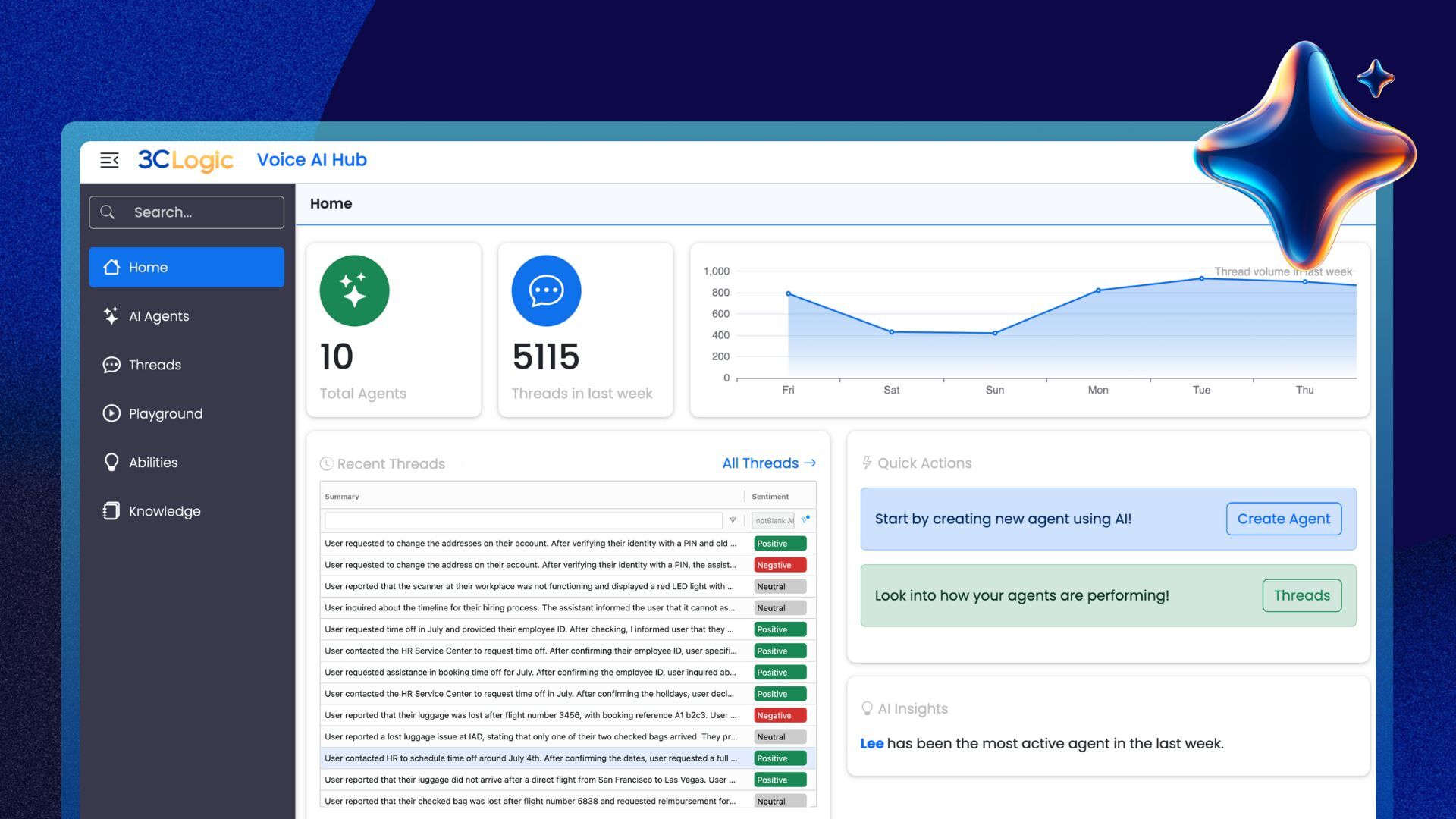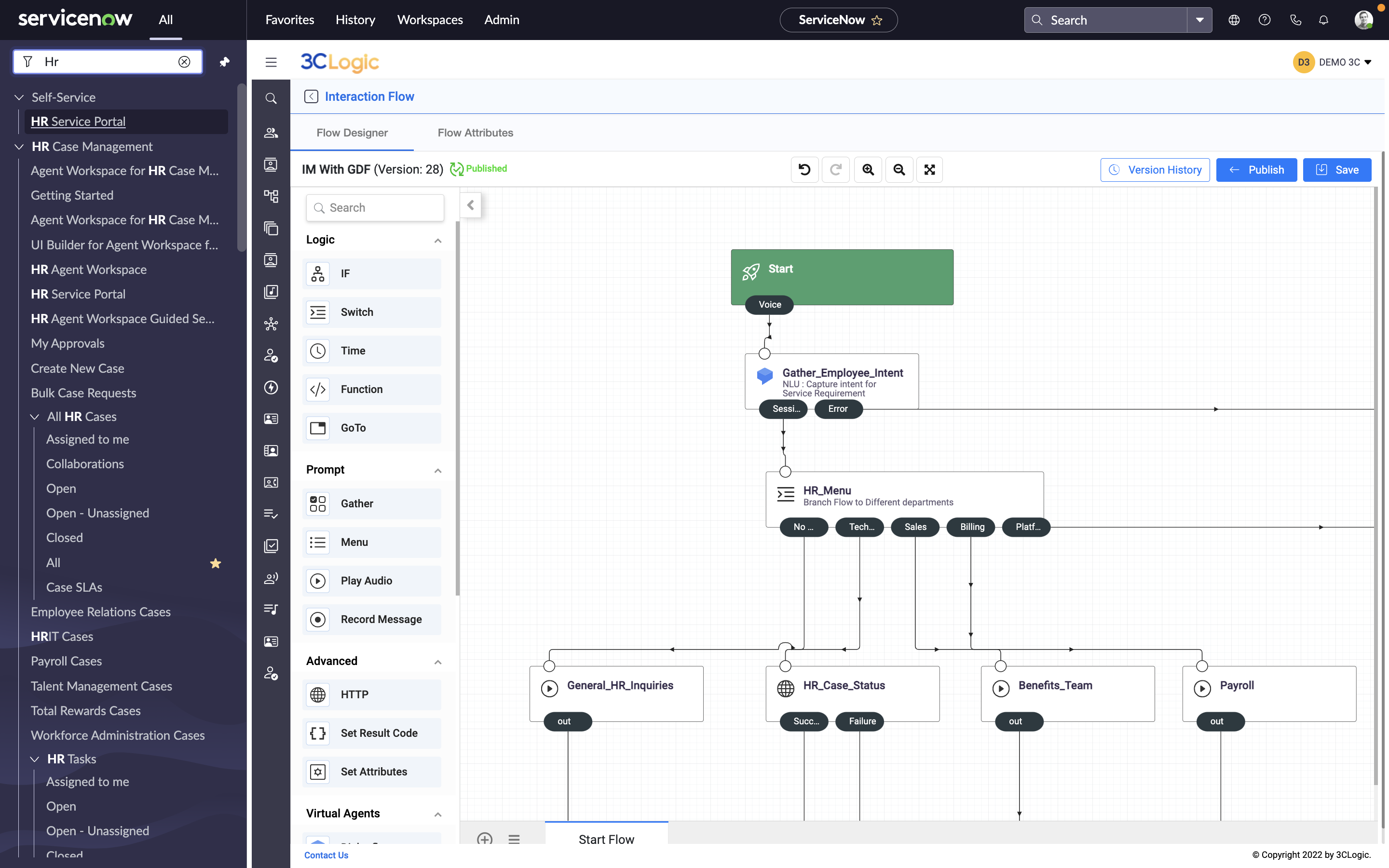In 2025, customer experience (CX) leaders are facing a clear mandate: deliver faster, smarter, and more personalized service without sacrificing trust. Voice AI is emerging as a critical tool to meet that expectation, but it’s not a magic replacement for human agents. In fact, the most successful organizations are designing blended workflows, where Voice AI and human talent complement each other rather than compete.
According to Forrester’s 2025 Global CX Index, 21% of brands saw their CX scores decline this year, with only 6% improving. At the same time, Gartner reports that 85% of customer service leaders plan to pilot customer-facing conversational GenAI, including voice, this year. But Gartner also cautions that over 40% of “agentic AI” projects may be scrapped by 2027 for lack of clear business value. The message is clear: AI is powerful, but only when used with purpose and well-defined boundaries.
Where Voice AI Adds Real Value
Voice AI is at its best when it’s focused on doing what it does exceptionally well: handling high-volume, structured, and rule-driven tasks that don’t require human judgment or emotional intelligence. By taking on these interactions, AI accelerates resolution, reduces wait times, and creates more space for human agents to focus on the conversations that truly need a personal touch.
Some of the most impactful use cases include:
- Identity and intent capture: Verifying who the customer is and why they’re calling, improving routing accuracy and trimming handle time.
- Policy-bound transactions: Managing balance inquiries, appointment checks, password resets, or other predictable, repeatable workflows.
- Common “how do I” questions: Guiding customers through troubleshooting steps or FAQs that can be resolved quickly without escalation.
- Proactive notifications: Delivering outage alerts, delivery updates, or payment reminders with built-in self-service options.
- Agent assist: Supporting live agents with real-time guidance, summarization, and compliance prompts to help them work faster and more accurately.
In these moments, Voice AI isn’t just a cost saver, it’s an enabler. It handles the routine with speed and precision, while empowering human agents to focus on complex, sensitive, or high-value interactions where empathy and judgment make the difference.

Build & Deploy Powerful Voice AI Agents
Designed to deliver human-like experiences at scale so that your live agents can focus on more complex tasks while driving optimal operational efficiency.
When to Escalate to a Human
Voice AI may be powerful, but it isn’t meant to operate in isolation. Just as there are clear scenarios where automation thrives, there are equally important moments where the human touch is essential. These are the interactions that demand judgment, empathy, or discretion – areas where even the smartest AI should know when to step aside. The key is to escalate quickly and cleanly, ensuring the transition feels natural to the customer and operationally seamless for the business.
Some of the most common escalation triggers include:
- High emotion or risk: Complaints, retention saves, hardship cases, or sensitive personal issues where trust and empathy are crucial.
- Open-ended or ambiguous issues: Situations that don’t match a clear workflow or require exploratory problem-solving.
- Exceptions and negotiations: Billing disputes, policy exceptions, or personalized offers that need human judgment.
- Regulatory or disclosure requirements: Scenarios where legal, compliance, or consent obligations require a human agent to deliver or confirm critical information.
- Customer preference: When someone simply asks to speak to a person because in CX, choice matters.
Importantly, escalation shouldn’t feel like starting over. When Voice AI hands off context, real-time transcripts, verified identity, and even sentiment signals to the agent, the customer doesn’t have to repeat themselves, and the agent can step in at full speed. Done well, this handoff transforms what could have been a point of friction into a moment of reassurance proving that AI and humans can work in concert, not competition, to deliver a better experience.
Challenges to Watch For
Voice AI and human agents may play different roles, but they’re deeply connected and both are only as effective as the ecosystem around them. When organizations struggle with implementation, it doesn’t just limit what AI can do; it also undercuts the effectiveness of the people behind the headset. The reality is that successful customer interactions depend on both sides being empowered with the right information, workflows, and context at the right time.
Some of the most common challenges impacting both Voice AI and live agents include:
-
Data readiness and integrations: When systems are fragmented, neither AI nor human agents can see the full picture. Voice AI can’t personalize or complete tasks effectively, and agents are left scrambling between screens to piece together context. Integrating with a central system of record, such as ServiceNow, ensures both AI and people work from the same source of truth, enabling faster resolutions and smoother experiences.
-
Over-automation risks: When automation is pushed too far, Voice AI ends up containing rather than solving, and agents inherit frustrated customers mid-conversation. Both sides lose.
-
Model drift: As products, policies, and language evolve, AI can become outdated, and agents lose confidence in the AI assist tools designed to help them.
-
Governance and trust: Transparency and compliance are essential not just to protect customers, but to ensure agents trust the data and recommendations AI provides.
-
Change management: New technology requires new workflows. If agents aren’t equipped with clear playbooks, and if AI isn’t aligned with how they work, both will underperform.
-
Rising customer expectations: With CX scores already at record lows in 2025, neither AI nor humans have the luxury of missteps. A clunky handoff or incomplete context isn’t just inefficient, it’s damaging to brand trust.
When these gaps are closed, Voice AI and live agents become complementary forces. AI handles the routine with speed and accuracy, while human agents bring empathy, creativity, and judgment to more complex moments. But when those gaps remain, both sides feel the friction along with the customer.
The Payoff When Done Right
Organizations that get this right are seeing measurable gains. Voice AI reduces handle times, improves after-hours coverage, lowers transfer rates, and gives agents sharper tools. 95% of service leaders, according to Gartner, plan to keep humans in the loop while redefining roles adhering to a “digital-first, not digital-only” model.
The result isn’t an AI contact center or a human contact center. It’s a smarter contact center where Voice AI handles what it should and hands off what it must with speed, context, and care.
Sources:
- Forrester Global CX Index 2025 – CX performance trends.
- Gartner 2025 - Customer Service AI: Hone in on High-ROI Use Cases
- Gartner - Rehiring Human Agents to Replace AI is 2025’s Latest Trend



